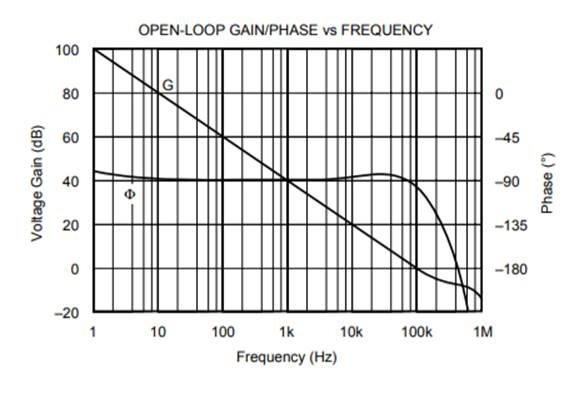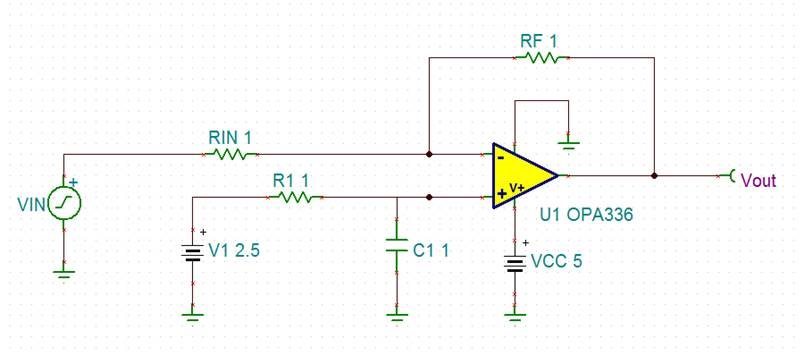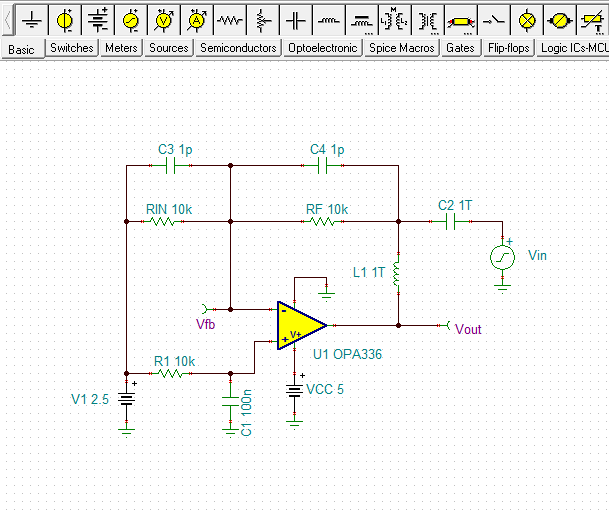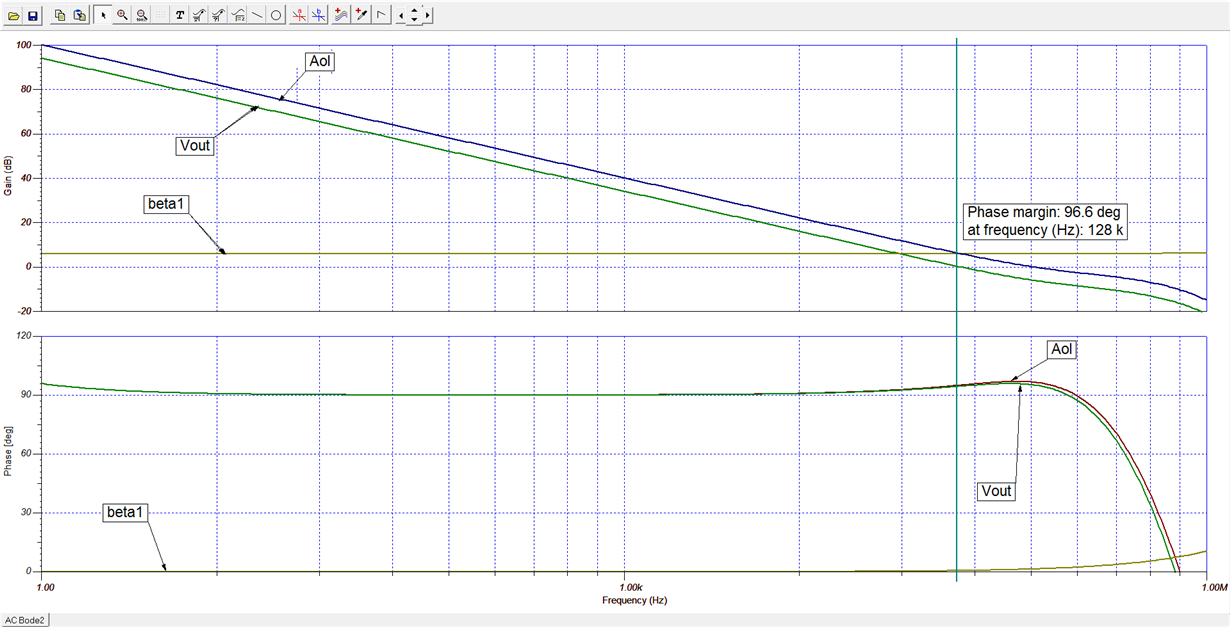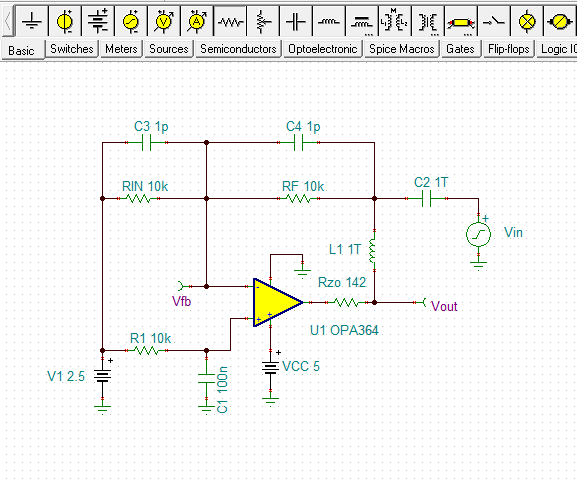Other Parts Discussed in Thread: LMV721, OPA364
Team,
My customer is having the following issue:
I am trying to run TINA/PSPICE stability analysis on the OPA336 and my plots do not look correct. I used the circuit below and replaced it with the OPA336 to try and see if my model was the problem and when I plot the response it does not look correct. Any chance of TI providing the circuit needed to verify the *.lib I am using for simulation? Feel free to send the TINA circuit if there is one.
I was hoping my simulation plot would like this, which is from of the data sheet. Using PSPICE it is nowhere close so I am not sure this circuit applies for the model I have.
Below is the plot I get using an LMV721(Green) and OPA336(Red) in the test circuit in the original email. As you can see the OPA336(Red) is nowhere near the LMV721(Green).
I used the circuit in the APPNote below. Maybe the circuit configuration will not work with the OPA336, which is fine but I just need to know. I used a different test circuit in PSPICE and got similar results so that is why I was questioning the actual model. Maybe I cannot do this type of simulation with the current model.
Regards,
Aaron



